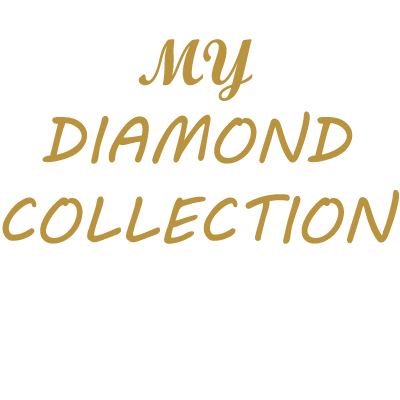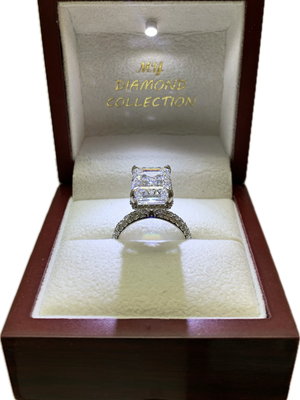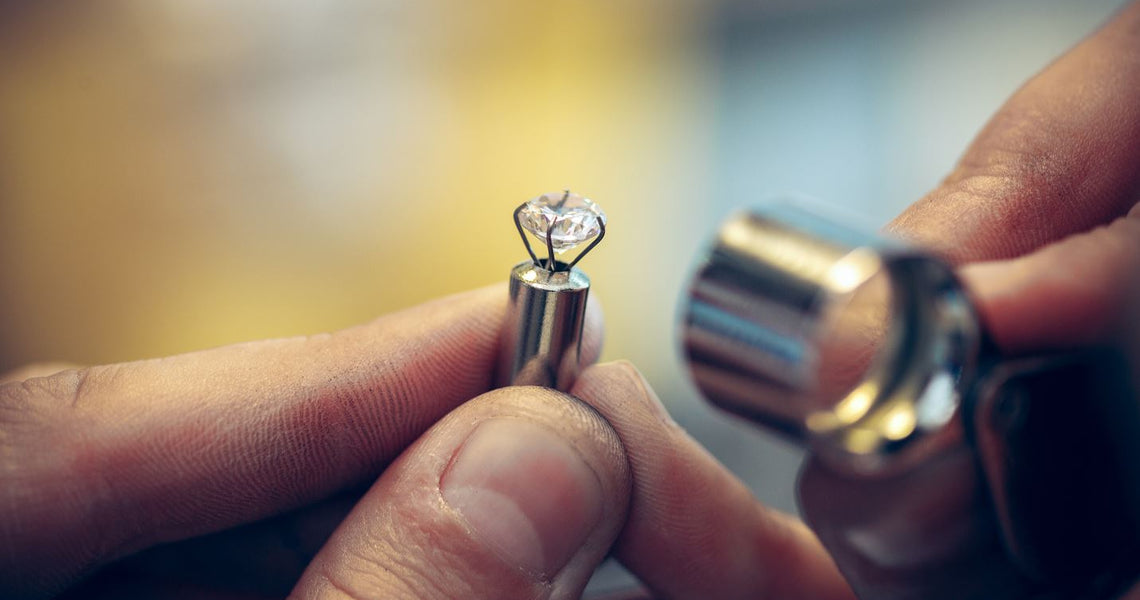Diamonds are more than just sparkling gemstones; they are symbols of love, commitment, and enduring beauty. When you're in the market for a diamond, understanding the 4Cs—Cut, Color, Clarity, and Carat Weight—is essential to make an informed purchase. In this comprehensive guide, we'll dive into the world of diamonds and master the 4Cs, helping you choose the perfect diamond that speaks to your heart.
The Importance of Diamond Cut: A Symphony of Light
The diamond's cut is not merely its shape; it's the craftsmanship that goes into enhancing its innate brilliance. The way a diamond is cut directly influences how it interacts with light, creating that mesmerizing sparkle. When deciding on the cut, always gravitate towards 'excellent' or 'very good' grades. Why? Because they promise a dance of light unparalleled in their shimmer and fire. Indeed, the cut dictates how splendidly a diamond shines.
The Dance of Light
The magic of a well-cut diamond lies in its ability to reflect and refract light. The angles and facets of the diamond interact with light, creating flashes of brilliance and dispersion of colors. An excellent cut diamond ensures that light enters and exits the stone in a way that maximizes its visual appeal.
Grades Matter
Diamond cuts are graded based on their proportions, symmetry, and polish. An 'excellent' cut diamond is crafted with precision, resulting in maximum brilliance. 'Very good' cuts are also a good choice, offering exceptional sparkle. Steer clear of 'fair' or 'poor' cuts, as they can diminish the diamond's beauty.
Unraveling the Mysteries of Diamond Color
Venture into the captivating spectrum of diamond colors. Starting from the pristine 'D' grade, emblematic of colorlessness, stretching to 'Z', reminiscent of a soft hue. For those seeking perfection, D to G graded diamonds should be your pick. Interestingly, these gems are practically indistinguishable in color to our eyes. But, for the enthusiasts desiring a tinge of color, H to J remains the sweet spot.
The Color Spectrum
Diamonds come in various colors, and the Gemological Institute of America (GIA) grades them on a scale from D (colorless) to Z (light yellow or brown). D-F diamonds are considered colorless and are the rarest and most valuable. G-J diamonds are near-colorless and offer an excellent balance of quality and value.
Personal Preference
Your choice of diamond color often depends on personal preference. Some people prefer the icy brilliance of colorless diamonds, while others appreciate the warmth of slightly tinted stones. The key is to choose a diamond whose color appeals to you and complements your style.
Clarity: The Unsung Hero of Diamonds
Dive into clarity. It's all about the imperfections, or the lack thereof. The scale? It moves from the pristine 'Flawless' to 'Included'. Your target should be the Flawless to VS2 range, as these diamonds barely show any inclusions, especially to the unaided eye.
The Clarity Scale
Diamonds are naturally formed under tremendous pressure, and this can lead to internal characteristics called inclusions and external blemishes. The clarity grade assesses the number, size, and visibility of these imperfections. Flawless and Internally Flawless diamonds have no visible inclusions, while diamonds in the Very Slightly Included (VS) range have minor inclusions that are difficult to see without magnification.
The Beauty of Clarity
Choosing a diamond with excellent clarity ensures that your gem sparkles with purity. Inclusions can interfere with the passage of light, affecting a diamond's brilliance. While some inclusions may be visible under magnification, they are often invisible to the naked eye in VS2 diamonds and above.
Carat Weight: The Delicate Balance of Size and Price
Carat, translating to 200 milligrams, gauges a diamond's size. Though not a direct indicator of its allure, it’s pivotal in matching your personal and financial sweet spots. Always remember, bigger isn't always better. It’s about striking a perfect harmony between the diamond's size and its innate beauty.
The Carat Conundrum
Carat weight is a factor that greatly influences a diamond's price. Larger diamonds are rarer and often more expensive. However, size isn't everything. A smaller diamond with exceptional cut, color, and clarity can outshine a larger one.
Finding Balance
When choosing a diamond, consider your budget and personal style. Striking the right balance between carat weight and the other 3Cs can lead to a diamond that's not only beautiful but also fits comfortably within your financial means.
Selecting the Perfect Diamond
Selecting the diamond that speaks to you is an art and a science. While the 4Cs offer a tangible way to assess a diamond, it's your personal touch, your emotion, and your budget that complete the story. Always ensure you lean on certified diamonds, especially from esteemed entities like the International Gemological Institute (IGI). Such certifications not only vouch for the diamond’s 4C grades but also assure you of its authenticity.
Conclusion
In essence, with the 4Cs as your compass and personal preference as your guide, the diamond that not just fits your finger, but also warms your heart, is within reach. Mastering the 4Cs—Cut, Color, Clarity, and Carat Weight—empowers you to make an informed decision and select a diamond that will be a symbol of love and beauty for a lifetime.
FAQs
1. What is the most important of the 4Cs when buying a diamond?
- While all 4Cs are important, many experts consider the cut to be the most crucial as it directly affects a diamond's sparkle and brilliance.
2. Are flawless diamonds the best choice for everyone?
- Not necessarily. Flawless diamonds are very rare and expensive. Diamonds in the VS1-VS2 range are often an excellent choice as they are nearly flawless to the naked eye.
3. Should I prioritize carat weight over other factors?
- It depends on your personal preference and budget. Striking a balance between carat weight and the other 3Cs (cut, color, clarity) is key to finding the perfect diamond.
4. What is the significance of diamond certification?
- Diamond certification, especially from reputable organizations like the IGI, ensures that the diamond's quality and characteristics are accurately represented.
5. Can I buy a beautiful diamond on a budget?
- Absolutely! By carefully considering the 4Cs and making informed choices, you can find a stunning diamond that fits your budget and preferences.





















